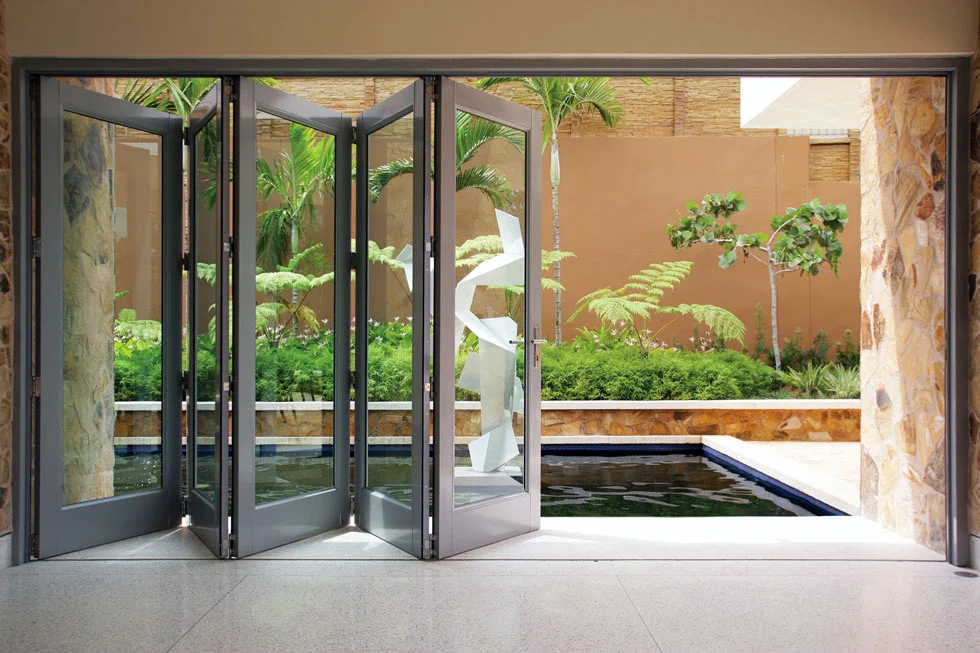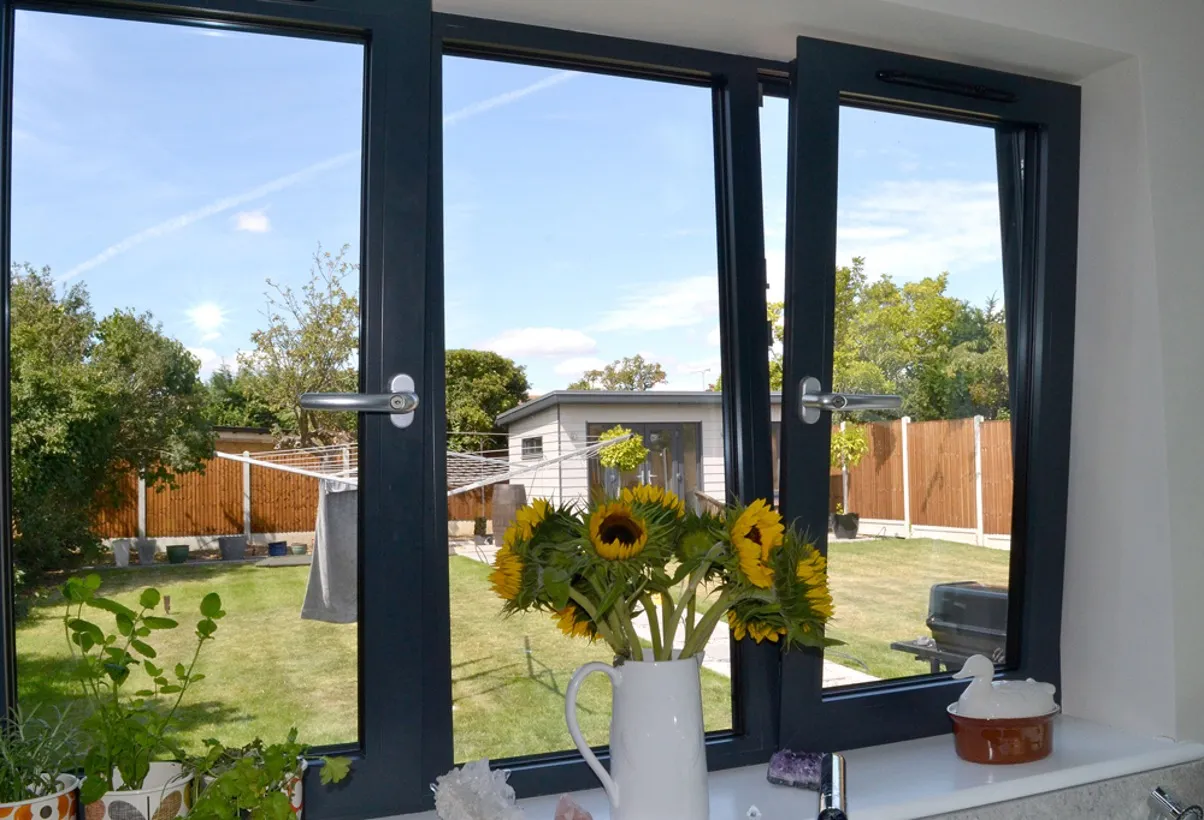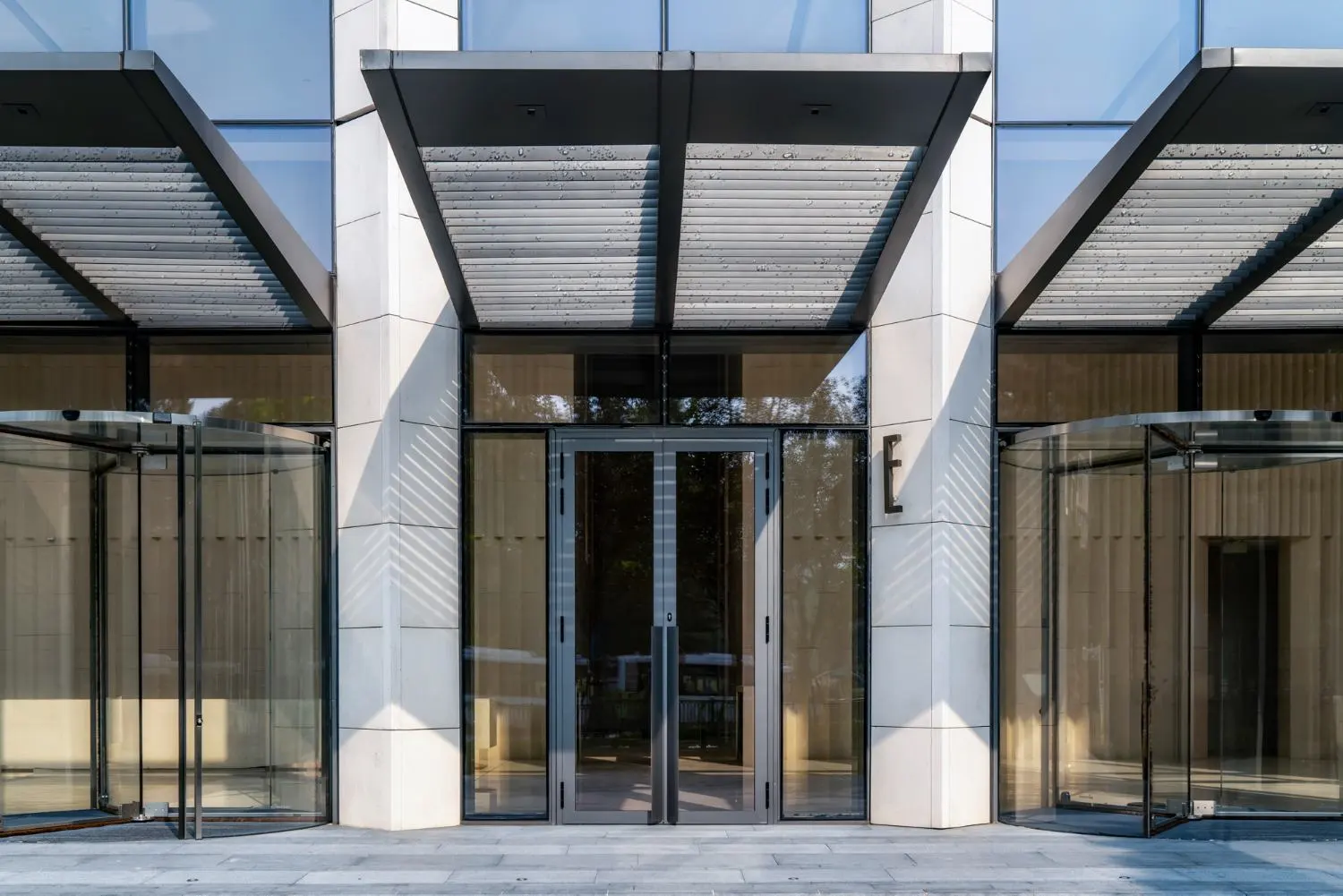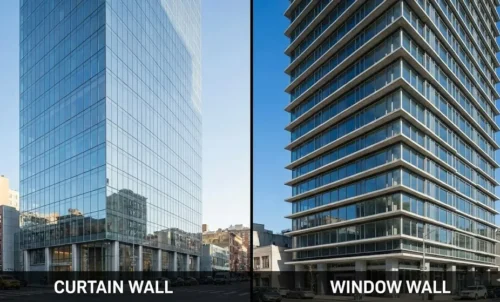Innentüren trennen nicht nur Räume – sie prägen die Atmosphäre und Funktionalität Ihres Zuhauses. Von der Schaffung von Privatsphäre und der Lichtregulierung bis hin zur stilvollen Gestaltung kann die richtige Tür einen gewöhnlichen Raum in etwas Besonderes verwandeln. Ob Neubau, Umbau oder einfach nur eine Verschönerung Ihrer Räumlichkeiten, Erneuerung Ihrer Innentüren ist eine überraschend einfache Möglichkeit, Ihrem Zuhause einen frischen, stimmigen Look zu verleihen.
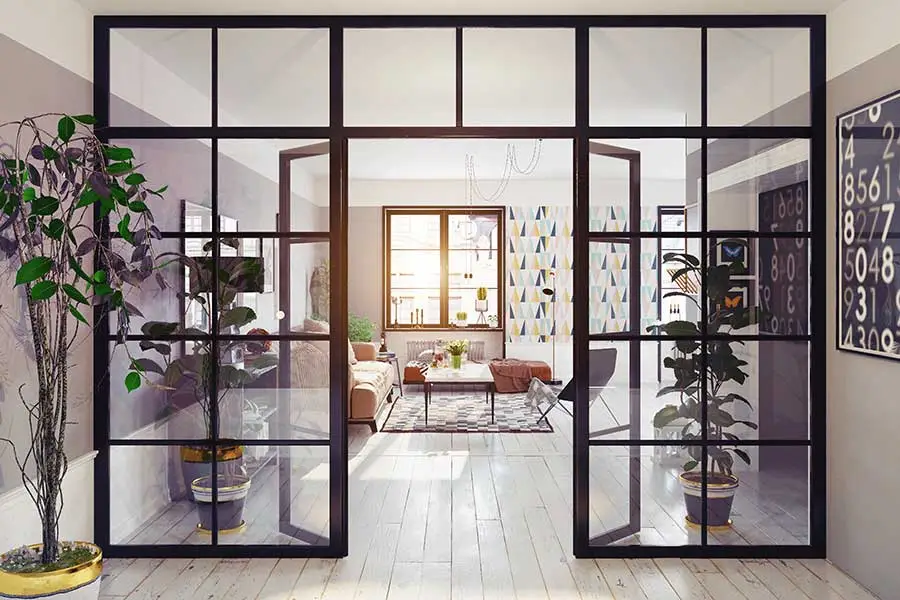
Über ihre Funktion hinaus sind Innentüren ein gestalterisches Statement. Die richtige Wahl kann Ihre Einrichtung ergänzen, Ihren Raum definieren und sogar die Raumwirkung verbessern. In diesem Ratgeber zeigen wir Ihnen, worauf Sie achten sollten, und erklären Ihnen, was Sie entdecken können. stilvolle Ideen für Innentüren, und bieten Expertentipps, die Ihnen helfen, selbstbewusst zu kombinieren.
Was Sie bei der Auswahl von Innentüren beachten sollten
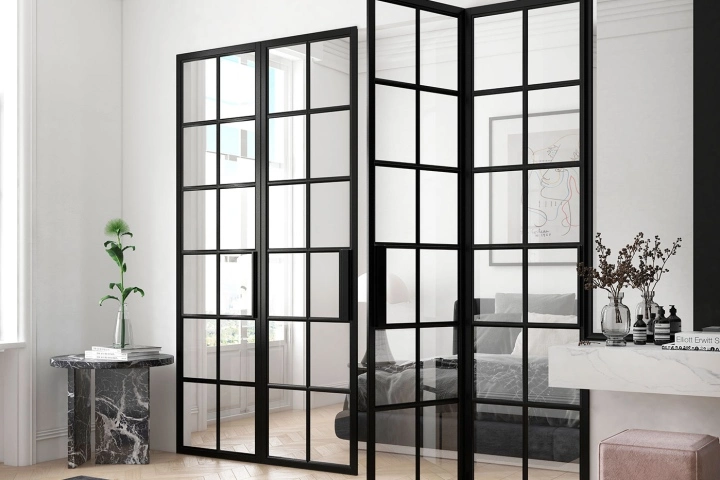
Die richtige Wahl treffen Innentür Es geht nicht nur um Stil, sondern darum, die optimale Lösung für Ihre Räumlichkeiten und Bedürfnisse zu finden. Hier sind die wichtigsten Punkte, die Sie beachten sollten:
Raumgröße und SchwenkfreiheitIn beengten Räumen ist eine herkömmliche Schwingtür möglicherweise nicht geeignet. Schiebe- oder Taschentüren sind ideal, um Platz zu sparen.
DatenschutzbedürfnisseFür Schlafzimmer und Badezimmer wählen Sie Vollspantüren die eine bessere Schall- und Sichtsicherheit bieten. In Gemeinschaftsbereichen können Glas- oder Paneeltüren für ein offenes und helles Ambiente sorgen.
WohnstilPassen Sie Ihre Türen an das Gesamtbild an. architektonisches Design Ihr Zuhause – ob modern, im Landhausstil, traditionell oder industriell – für ein stimmiges Gesamtbild.
Haltbarkeit und Material: Wählen Materialien die dem Zweck des Raumes entsprechen. Massivholz ist zeitlos und langlebig, während MDF bietet eine budgetfreundliche, glatte Oberfläche.
Kreative Ideen für Innentüren
Verwandeln Sie Ihre Innentüren mit diesen kreativen und stilvollen Ideen in Designelemente:
1. Geometrische Muster
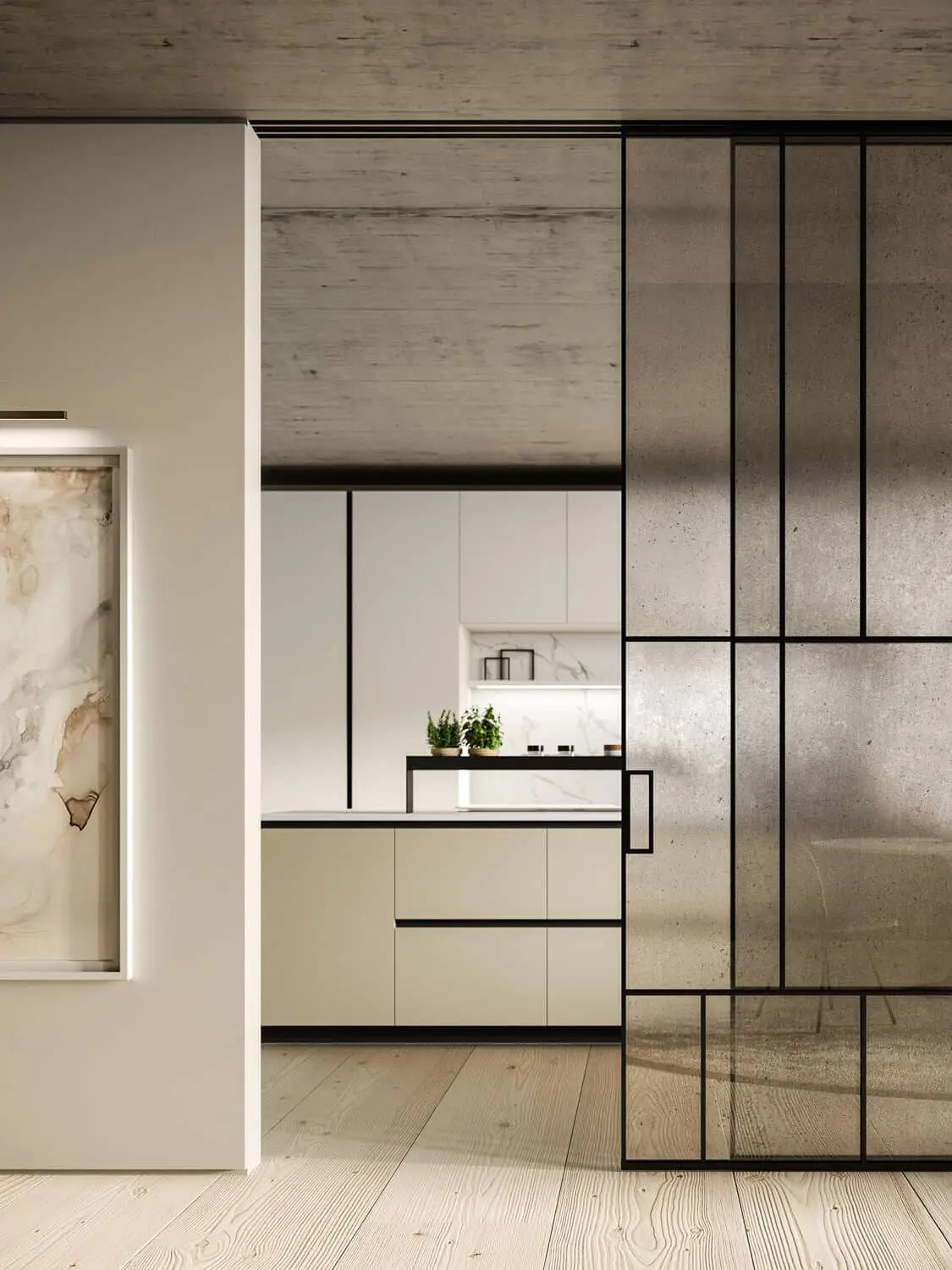
Male auffällige geometrische Formen wie Zickzackmuster oder Rauten auf Türen, um dem Raum eine moderne und künstlerische Note zu verleihen und ihn zu beleben.
2. Kräftige Farben
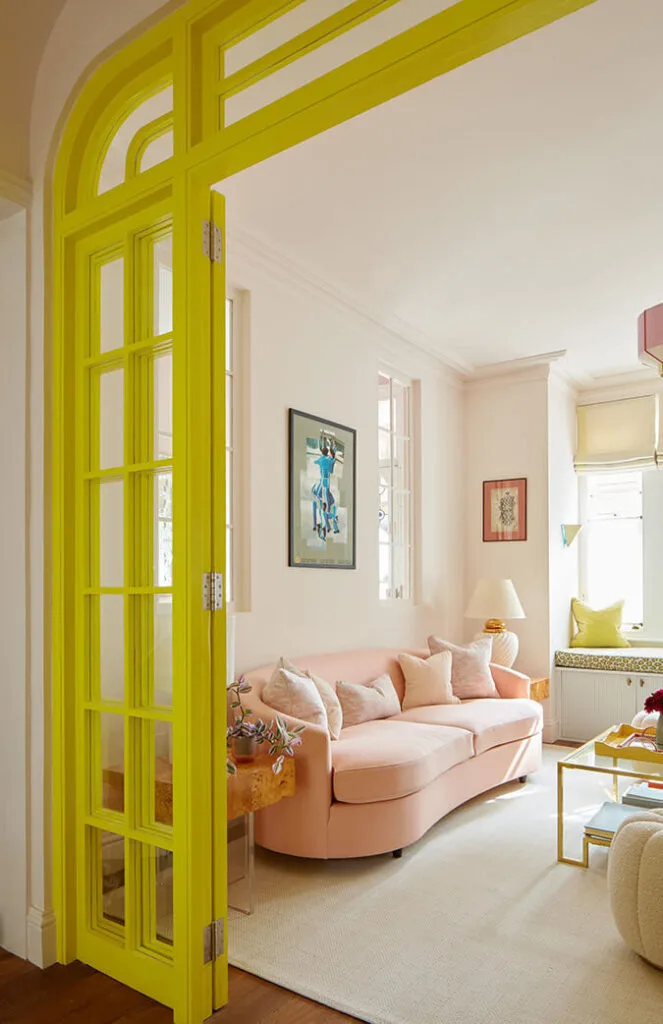
Verwenden Sie kräftige Farbtöne wie Dunkelblau oder Senfgelb, um eine ausdrucksstarke Tür zu schaffen, die Ihrem Zuhause Persönlichkeit verleiht.
3. Abnehmbare Tapete
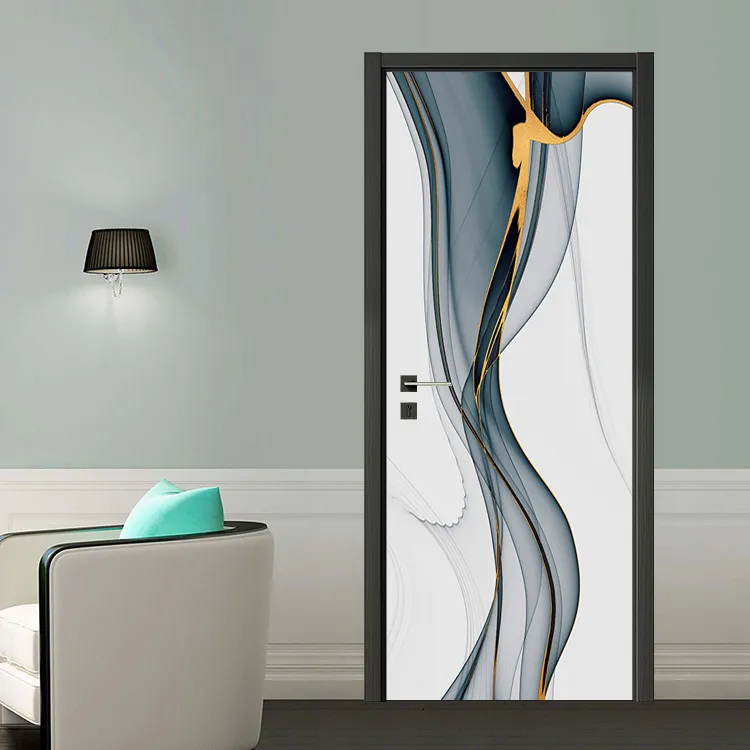
Bekleben Sie Türen mit selbstklebender Tapete mit Blumen-, geometrischen oder strukturierten Mustern für eine einfache und unverbindliche Aufwertung.
4. Lackierte Türverkleidungen
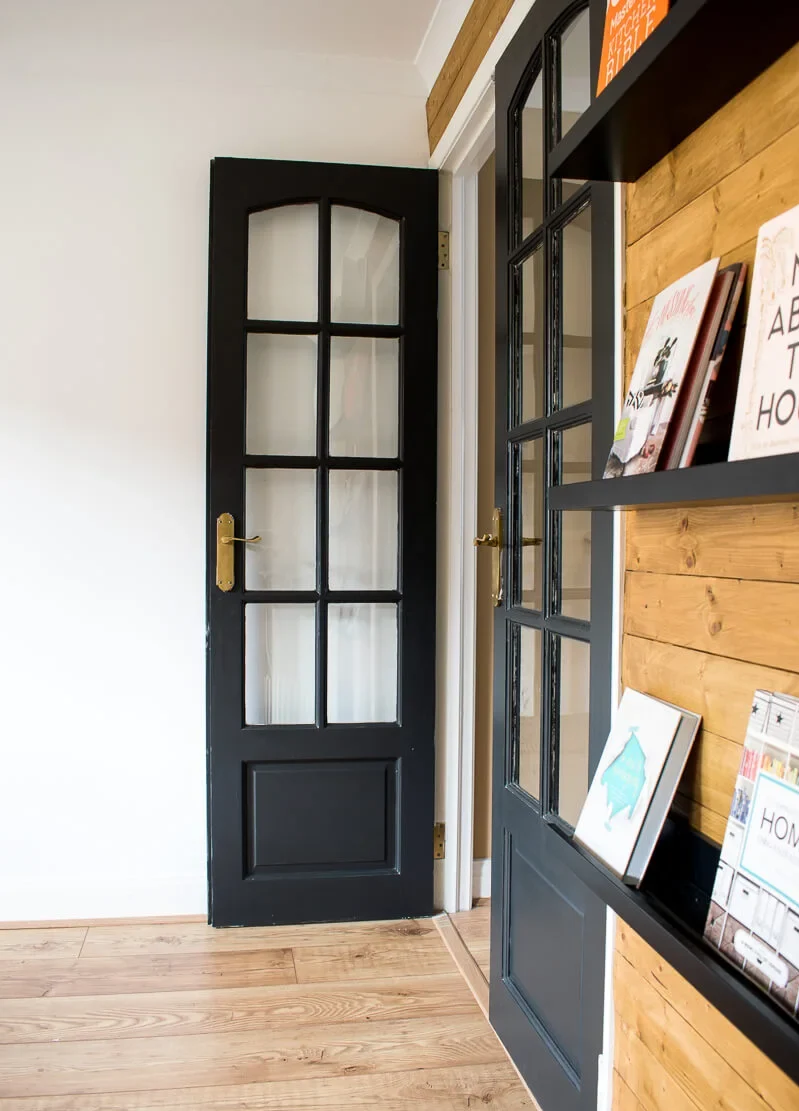
Heben Sie vertiefte Bereiche mit Kontrastfarben hervor, um einen schicken Zweifarbeffekt zu erzielen, der architektonische Details hervorhebt.
5. Ganzkörperspiegel
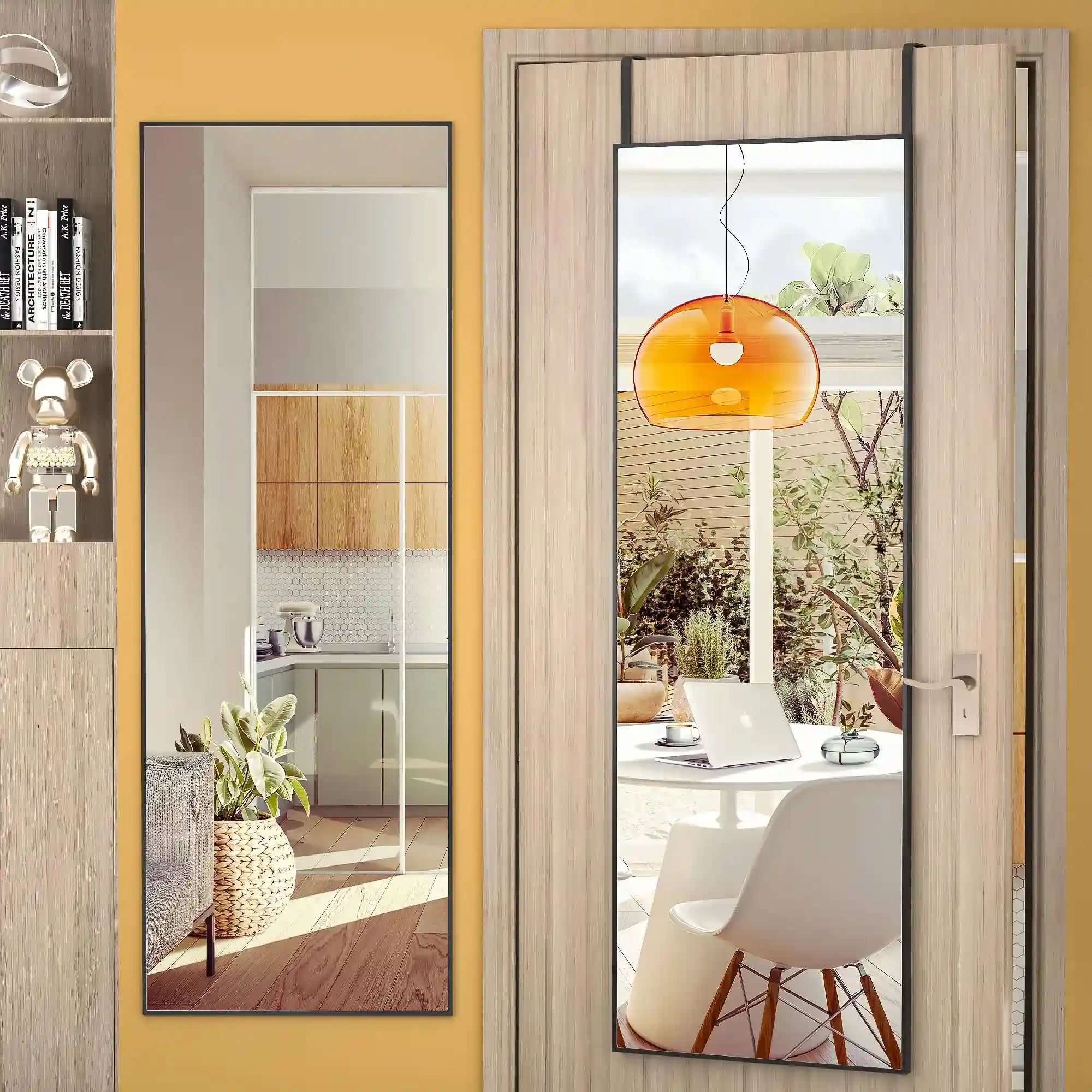
Bringen Sie an Schlafzimmer- oder Schranktüren einen Ganzkörperspiegel an, um den Eindruck von mehr Platz zu erwecken und die Funktionalität zu verbessern.
6. Milchglasplatten
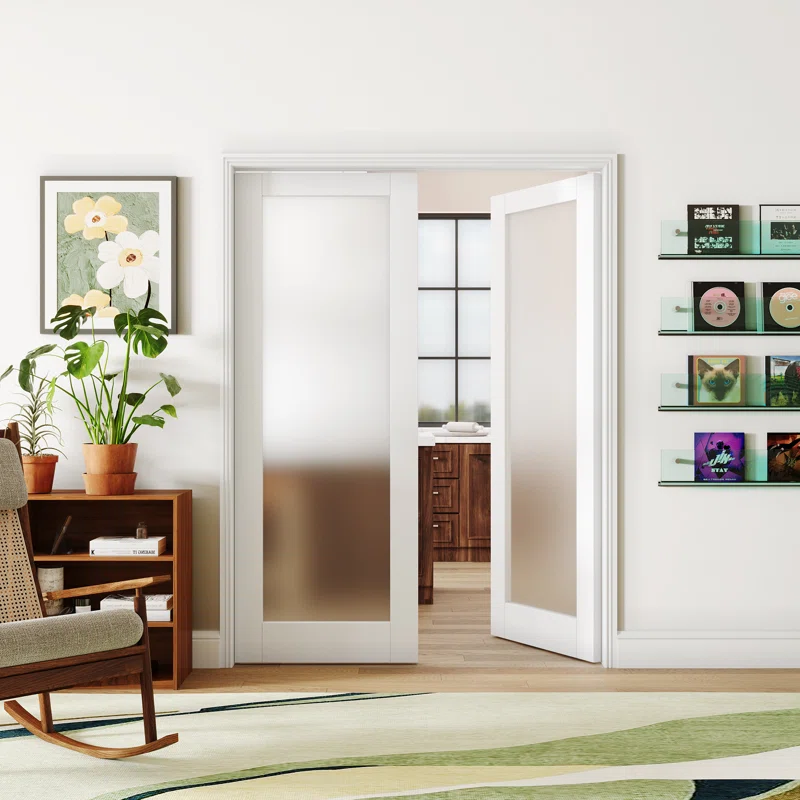
Installieren Sie Milchglasplatten, um die Privatsphäre zu wahren und gleichzeitig Licht in die Räume strömen zu lassen – perfekt für Badezimmer oder Büros.
7. Schiebetüren im Scheunenstil
Verleihen Sie Ihrem Raum einen rustikalen Charme mit Scheunentoren in Holz- oder Metallausführung, die Platz sparen und eine gemütliche Atmosphäre vermitteln.
8. Versteckte Türen
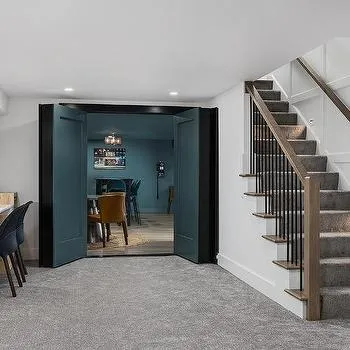
Türen verkleiden als Bücherregale oder Wandpaneele, um einen Geheimgang zu schaffen oder Ihrem Zuhause eine spannende Note zu verleihen.
9. Stoffbezogene Türen
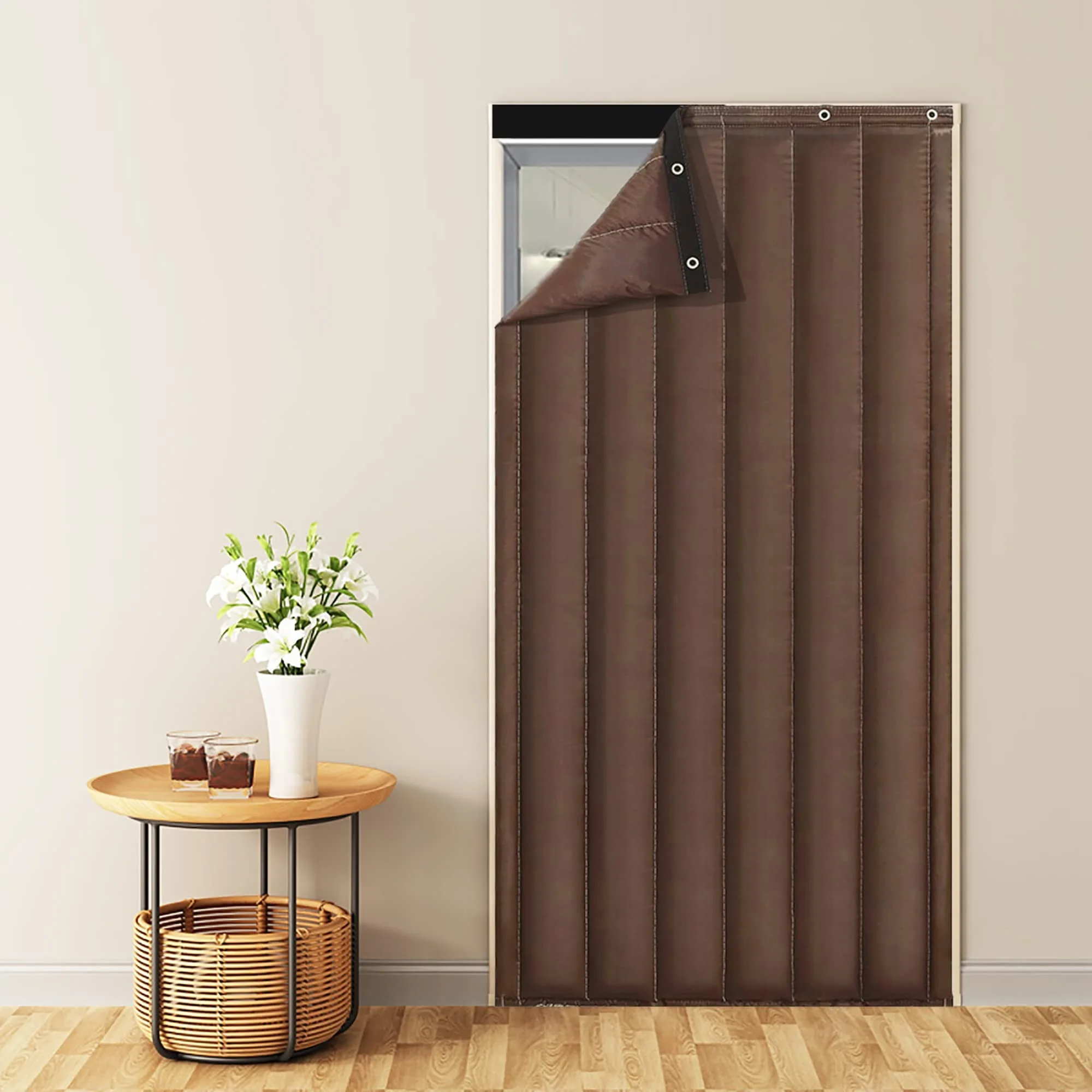
Verzieren Sie Türen mit gemustertem oder strukturiertem Stoff für einen weichen, einzigartigen Look, der gleichzeitig als Schalldämmung dient.
10. Schablonenkunst
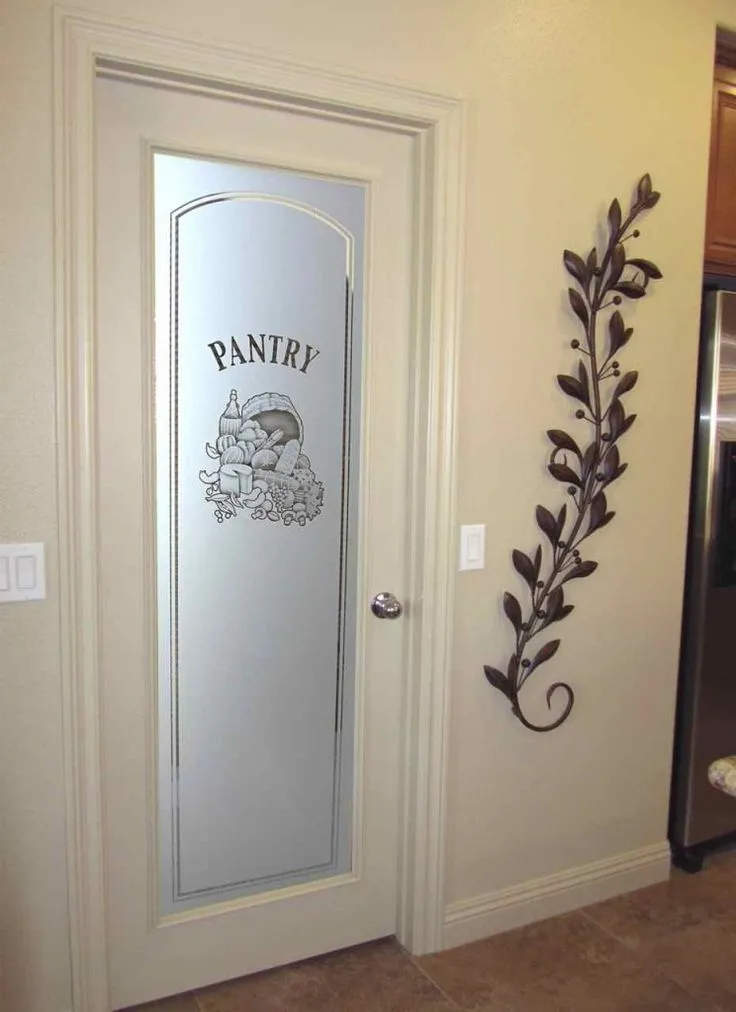
Verwenden Sie Schablonen, um auf Türen komplizierte Designs wie Blumenmuster oder abstrakte Kunst zu erstellen und ihnen so eine persönliche Note zu verleihen.
11. Metalleinlagen
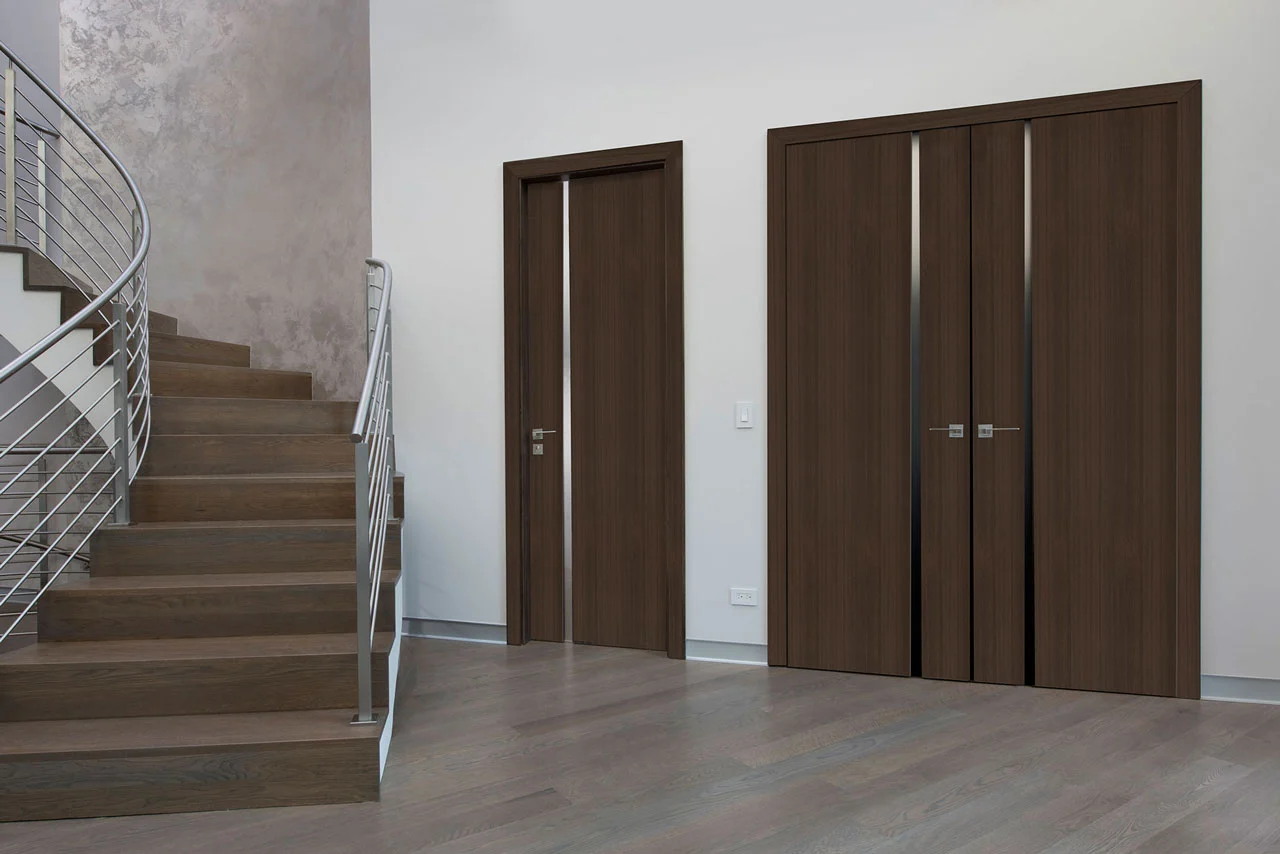
Integrieren Sie Metalleinlagen oder Akzente in Holztüren, um dem Design eine moderne, industrielle Note zu verleihen.
12. Vintage-Hardware
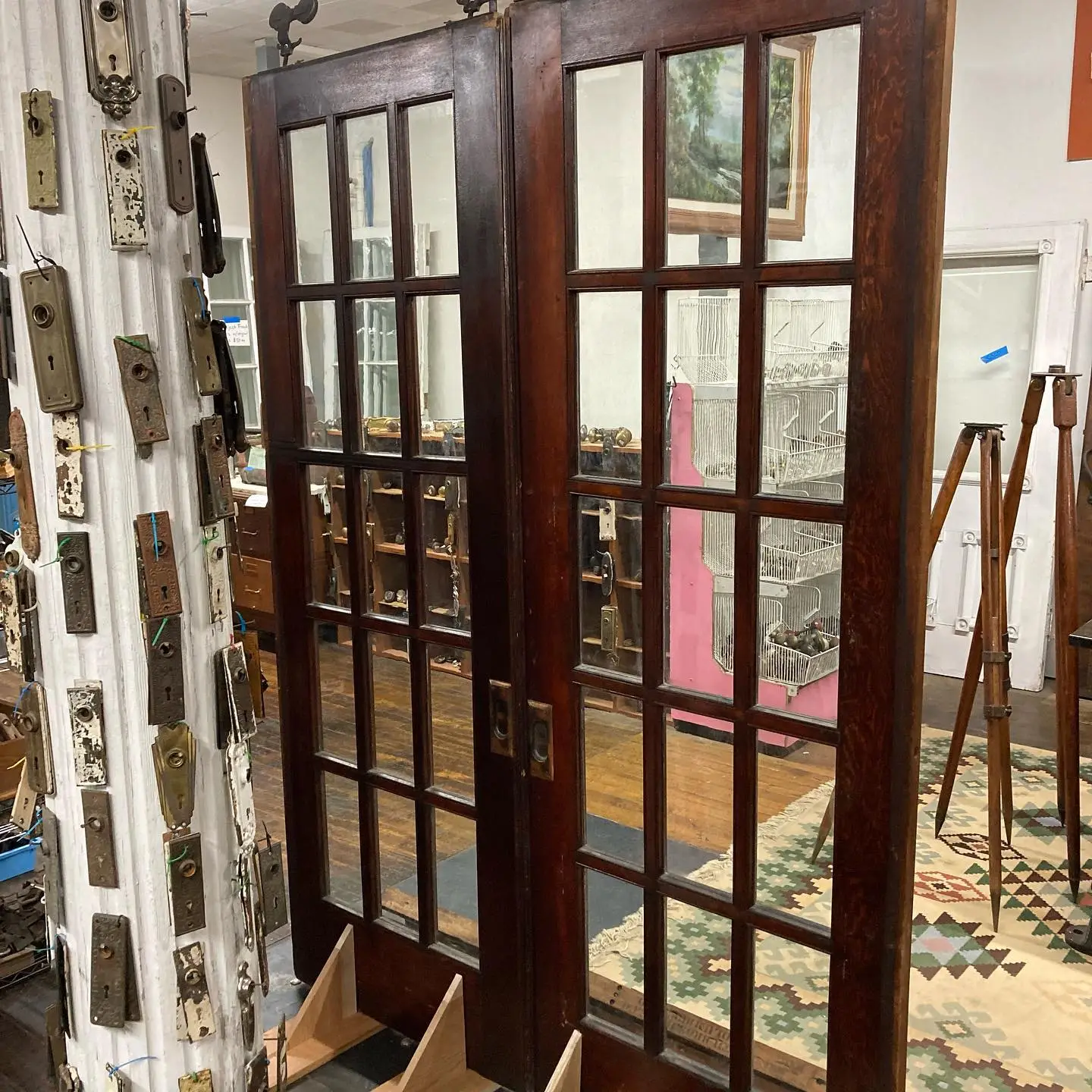
Tauschen Sie Standardgriffe gegen Vintage-inspirierte Knöpfe aus oder Türgriffe um Türen ein klassisch-elegantes Aussehen zu verleihen.
13. Natürliche Holzbeizen
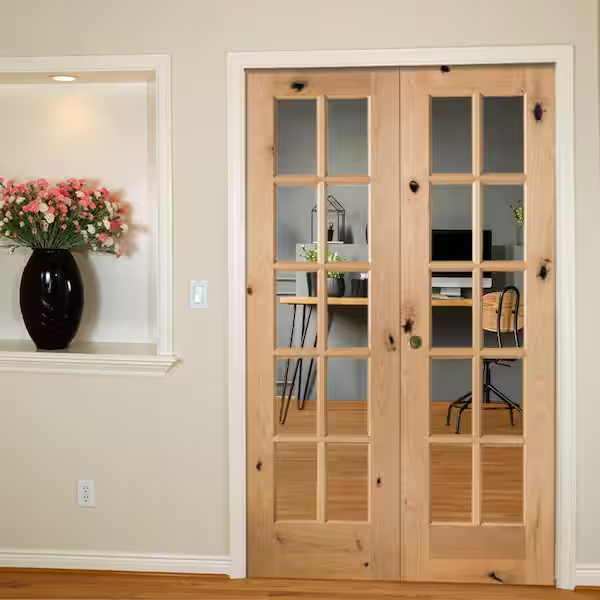
Verwenden Sie natürliche Holzbeizen, um die Maserung und Struktur von Holztüren hervorzuheben und Ihren Räumen Wärme und natürlichen Charme zu verleihen.
14. Glaseinsätze
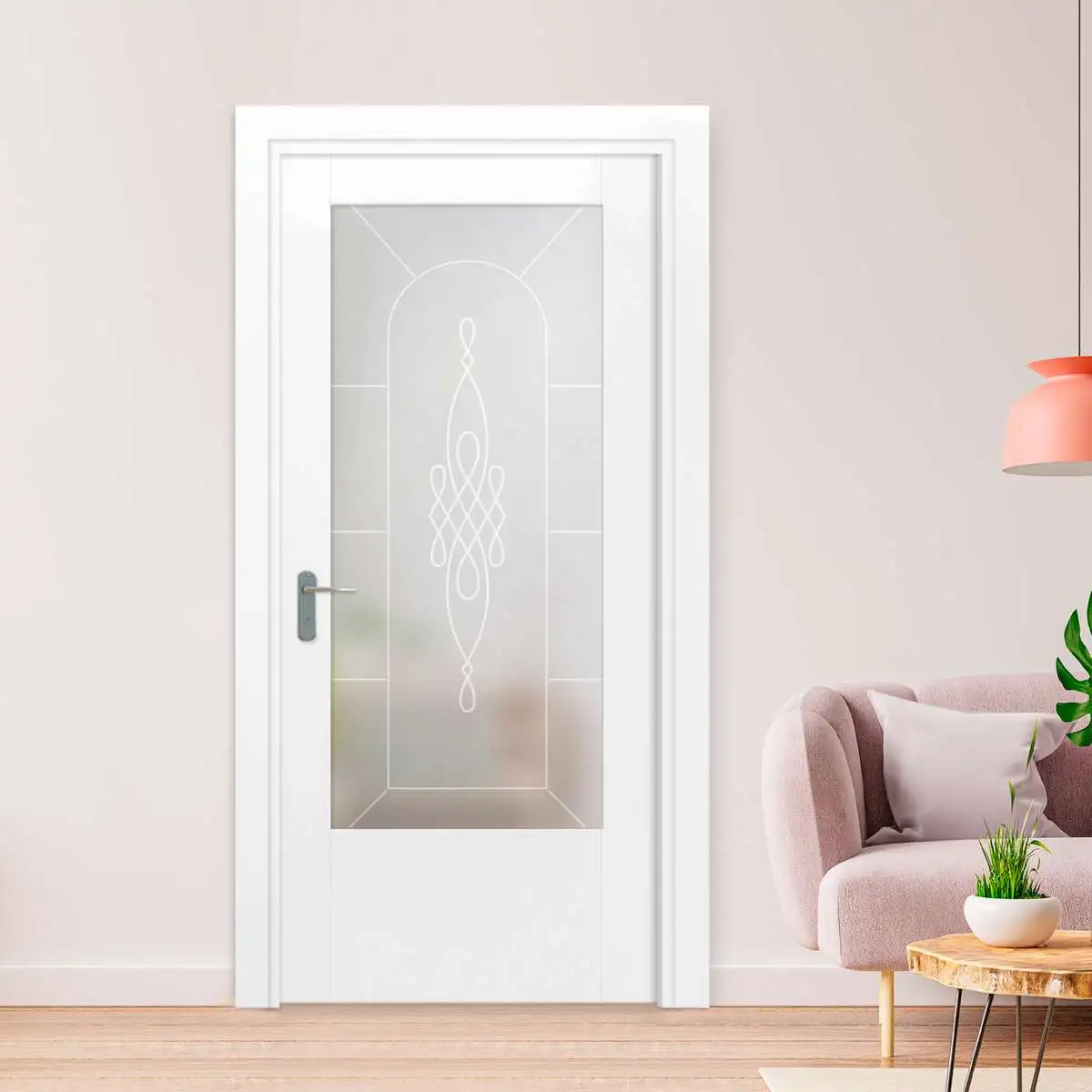
Fügen Sie Türen klare oder dekorative Glaseinsätze hinzu, um ein elegantes, luftiges Gefühl zu erzeugen und gleichzeitig ein einzigartiges Design zu präsentieren.
15. Geschnitzte Holzdetails
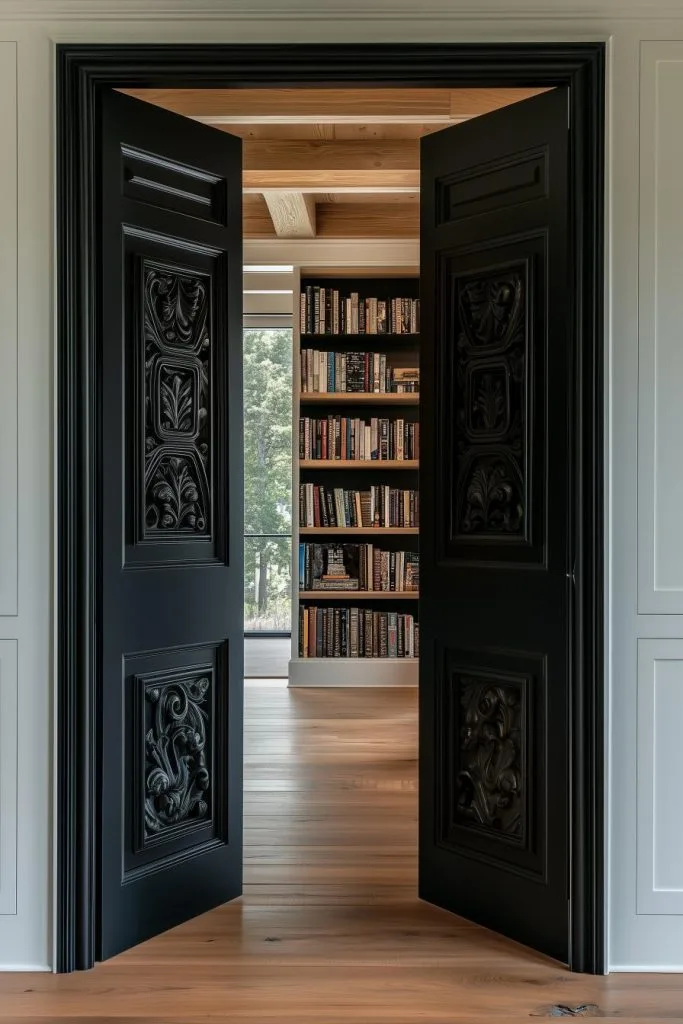
Wählen Sie aufwendig geschnitzte Türen mit floralen oder geometrischen Mustern, um Eleganz und eine zeitlose Ästhetik zu verleihen.
16. Lamellentüren
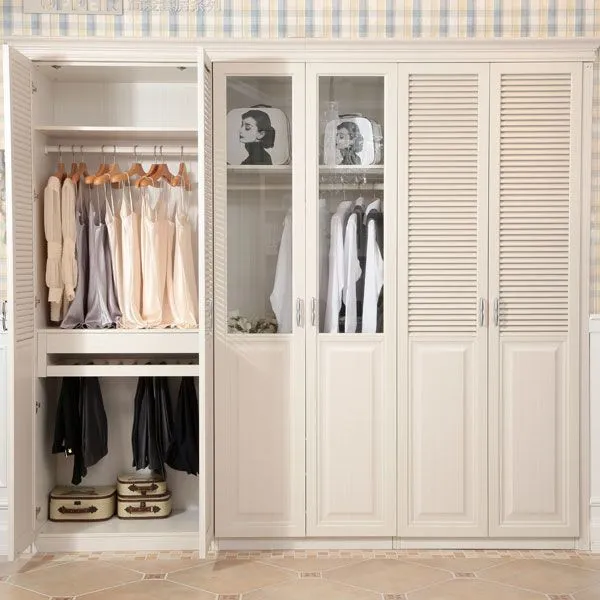
Entscheiden Sie sich für Lamellentüren, die für Luftzirkulation und ein luftiges Gefühl sorgen – ideal für Kleiderschränke oder Waschküchen.
17. Lackierte Türrahmen
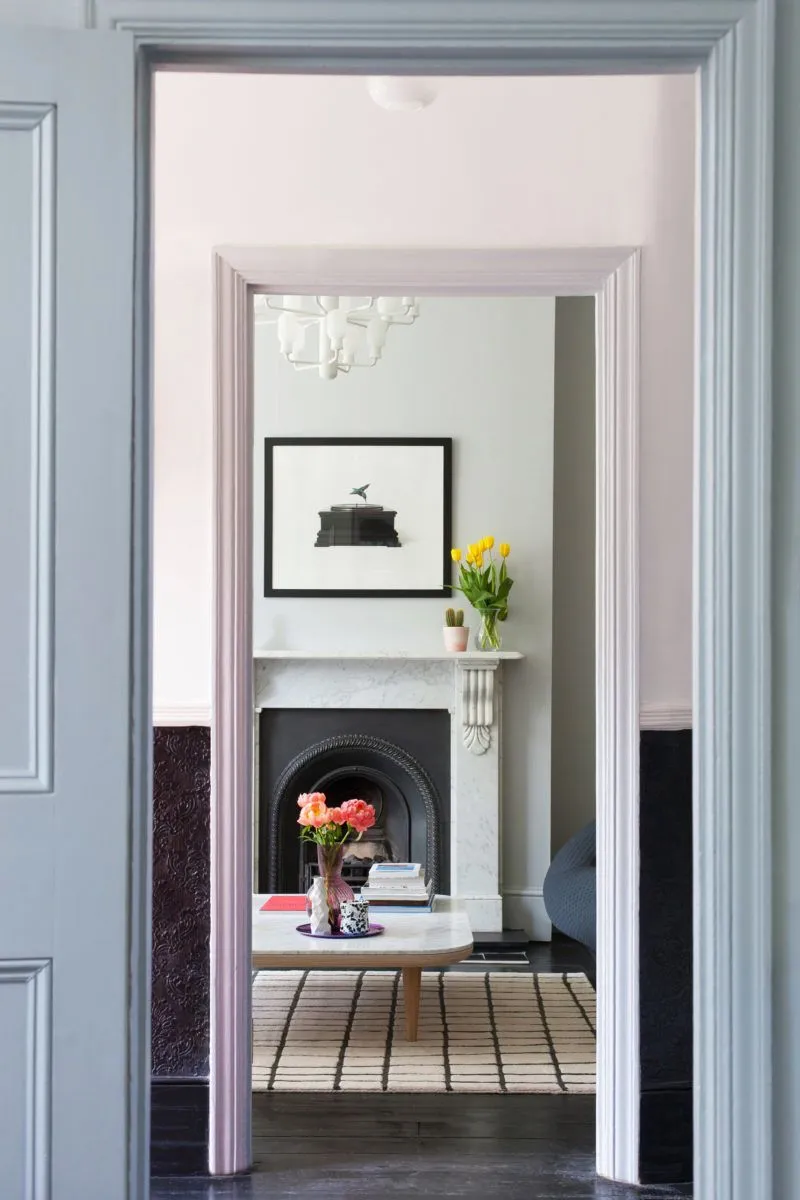
Akzentuieren Türrahmen mit kräftiger oder metallischer Farbe für ein subtiles, aber wirkungsvolles Designelement.
18. Tafeltüren
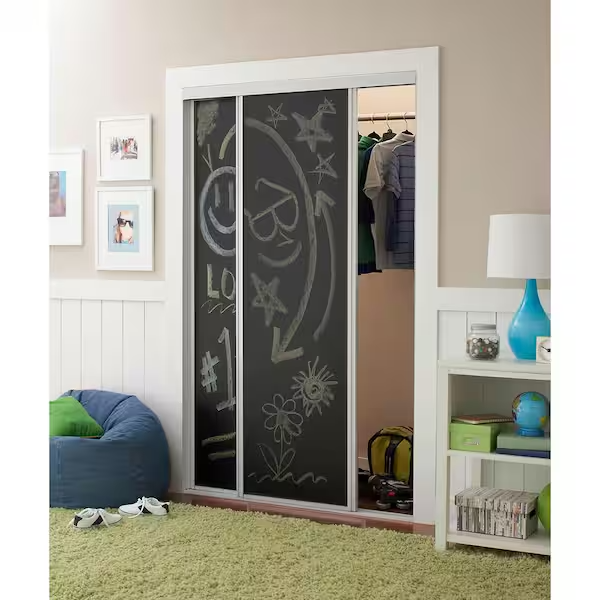
Verwandeln Sie Türen in funktionale Kreidetafeln – perfekt für Küchen, Kinderzimmer oder Heimbüros.
19. Antike Oberflächen
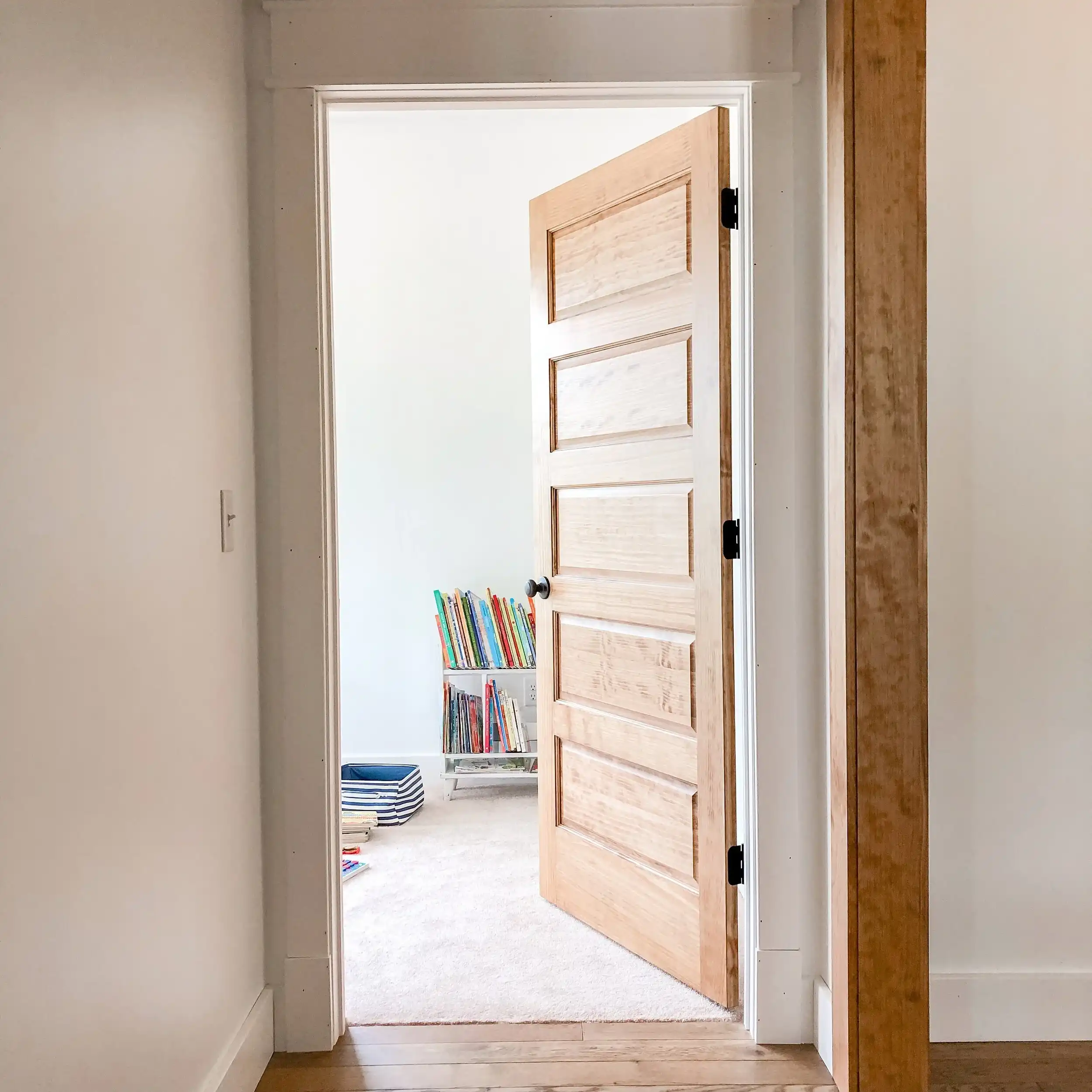
Tragen Sie Antiklack- oder Patinaeffekte auf, um einen Vintage-Look zu erzielen, der gut zu einer rustikalen oder schäbig-schicken Einrichtung passt.
20. Biophile Designs
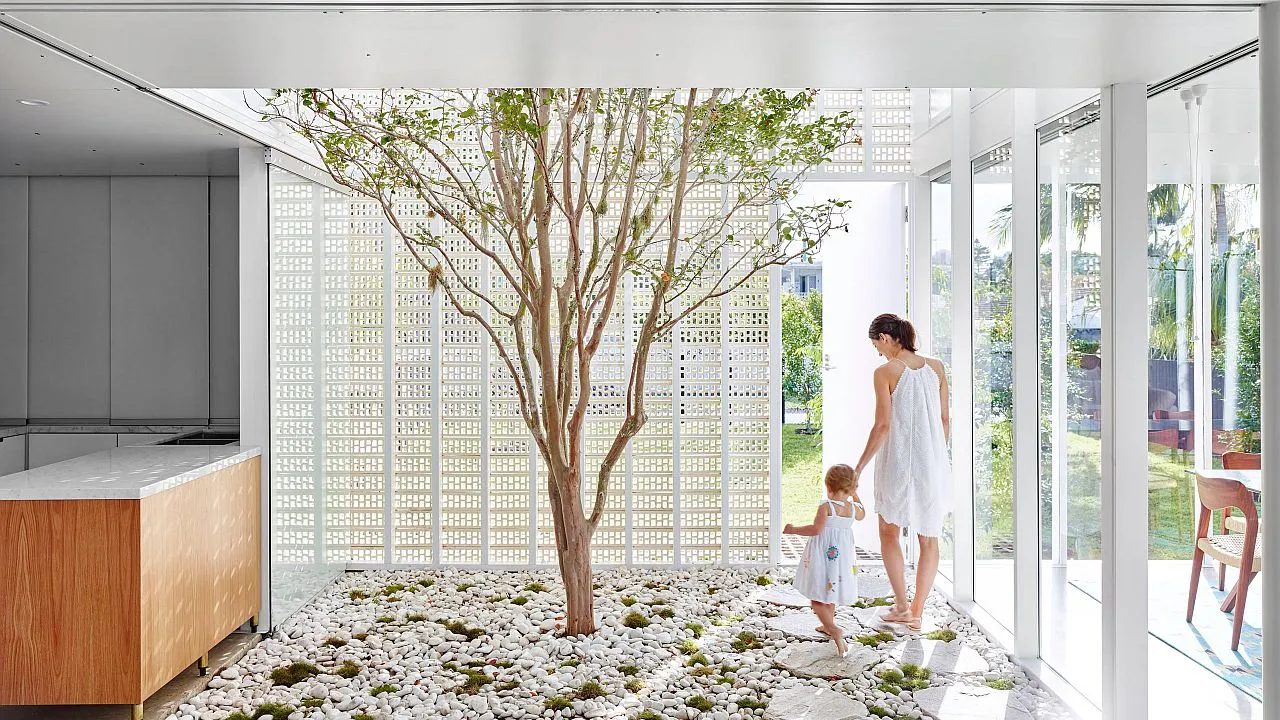
Integrieren Sie von der Natur inspirierte Elemente wie eingravierte Blattmuster oder Holzlatten, um die Natur ins Haus zu holen.
21. 3D-Wandpaneele
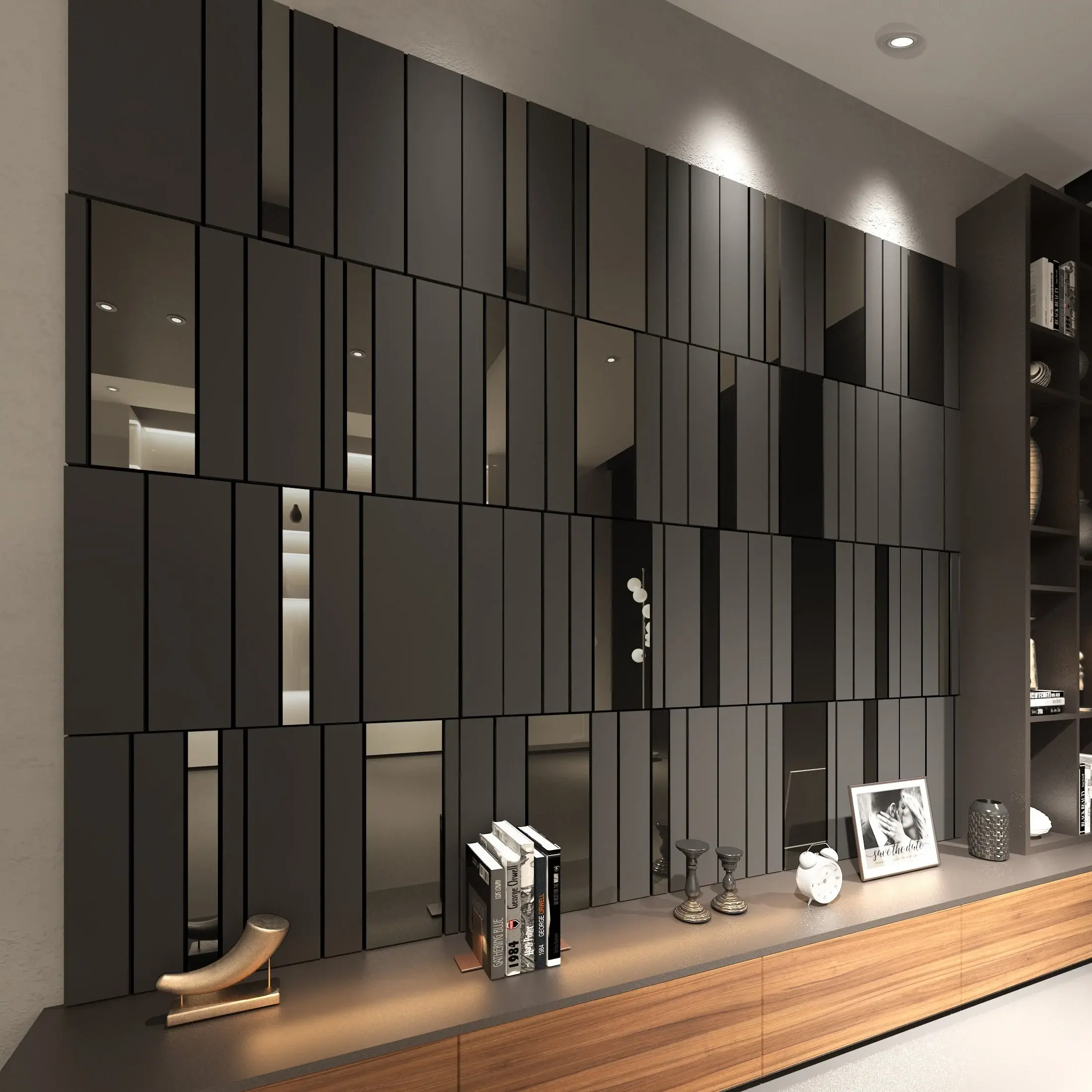
Bringen Sie strukturierte Wandpaneele an Türen an, um einen modernen, wirkungsvollen Look mit Tiefe zu erzielen.
22. Integrierte Regale
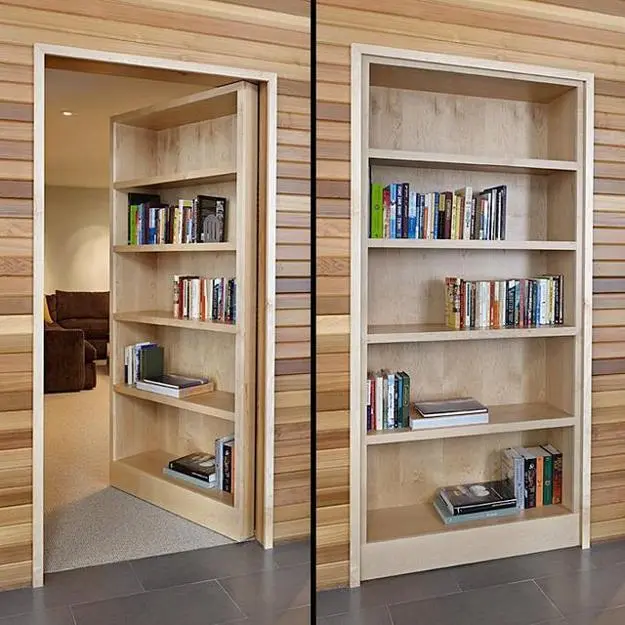
Kombinieren Sie Funktion und Design, indem Sie Türen mit kleinen Regalen zur Aufbewahrung von Büchern, Pflanzen oder Dekorationen ausstatten.
23. Metallgitter
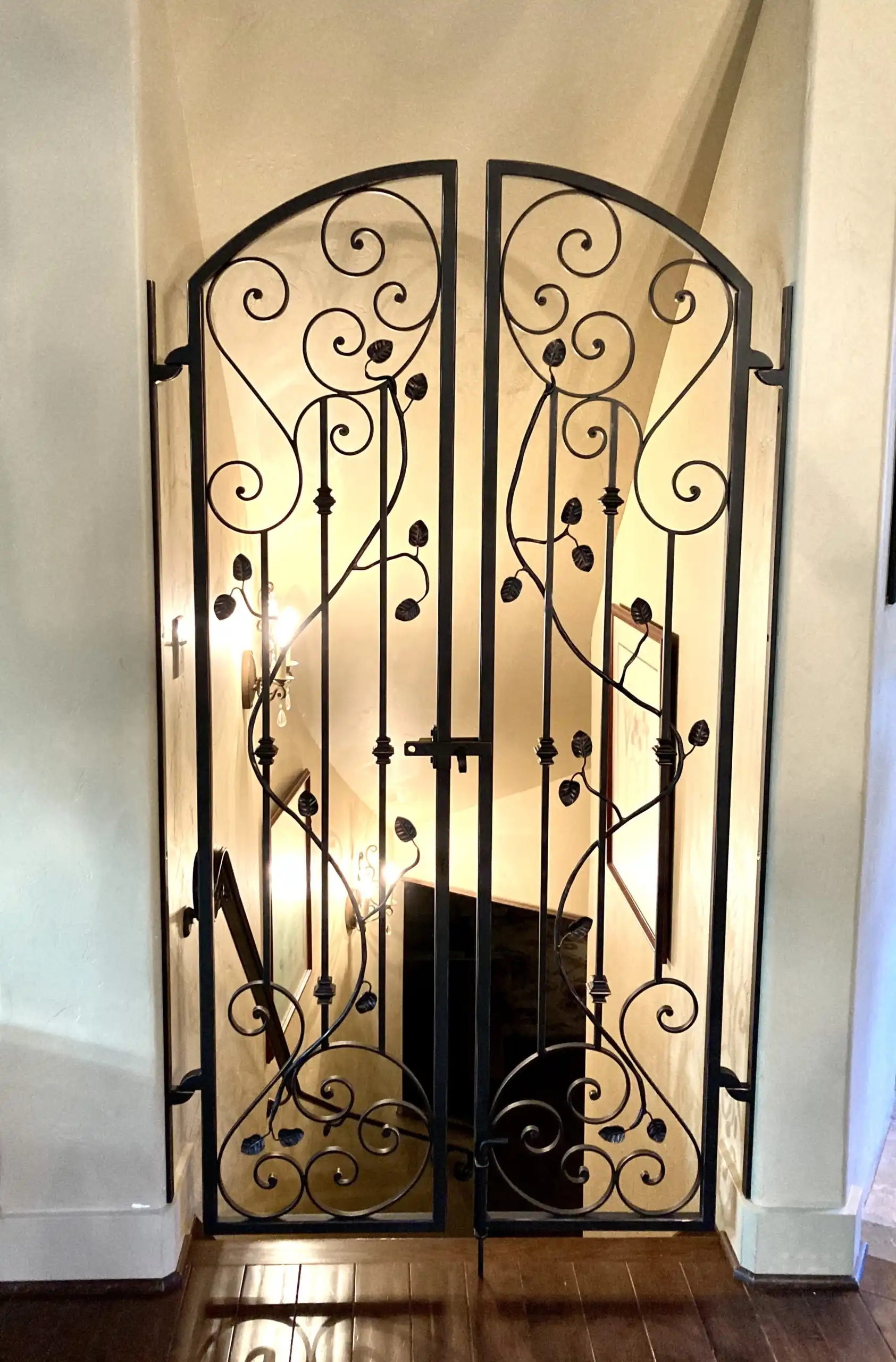
Installieren Sie dekorative Metallgitter an Türen für einen anspruchsvollen Look mit industriellen Untertönen.
24. Getöntes Glas
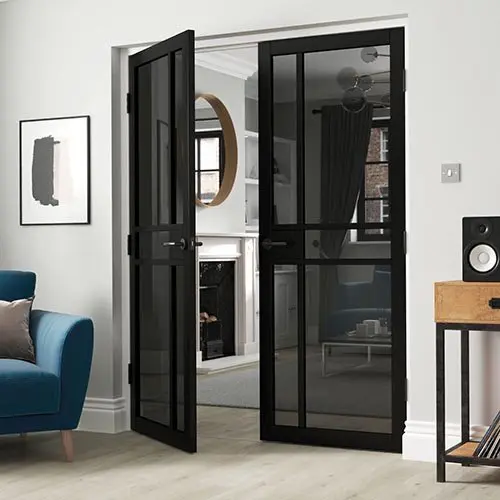
Verwenden Sie getönte Glasplatten in Farben wie Bernstein oder Blaugrün für eine auffällige und dennoch elegante Ergänzung Ihrer Türen.
25. Beleuchtete Kanten
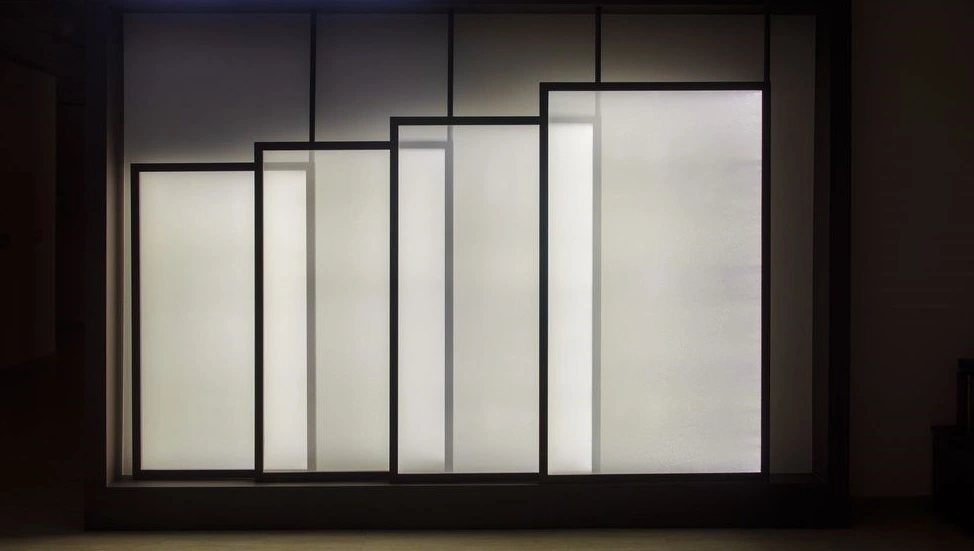
Hinzufügen LED-Streifen um Türkanten herum für einen futuristischen Glanz, der die Atmosphäre insbesondere in modernen Räumen verbessert.
Arten von Innentüren
Innentüren sind mehr als nur funktional – sie tragen maßgeblich zum Stil und zur Raumwirkung Ihres Zuhauses bei.
1. Französische Türen
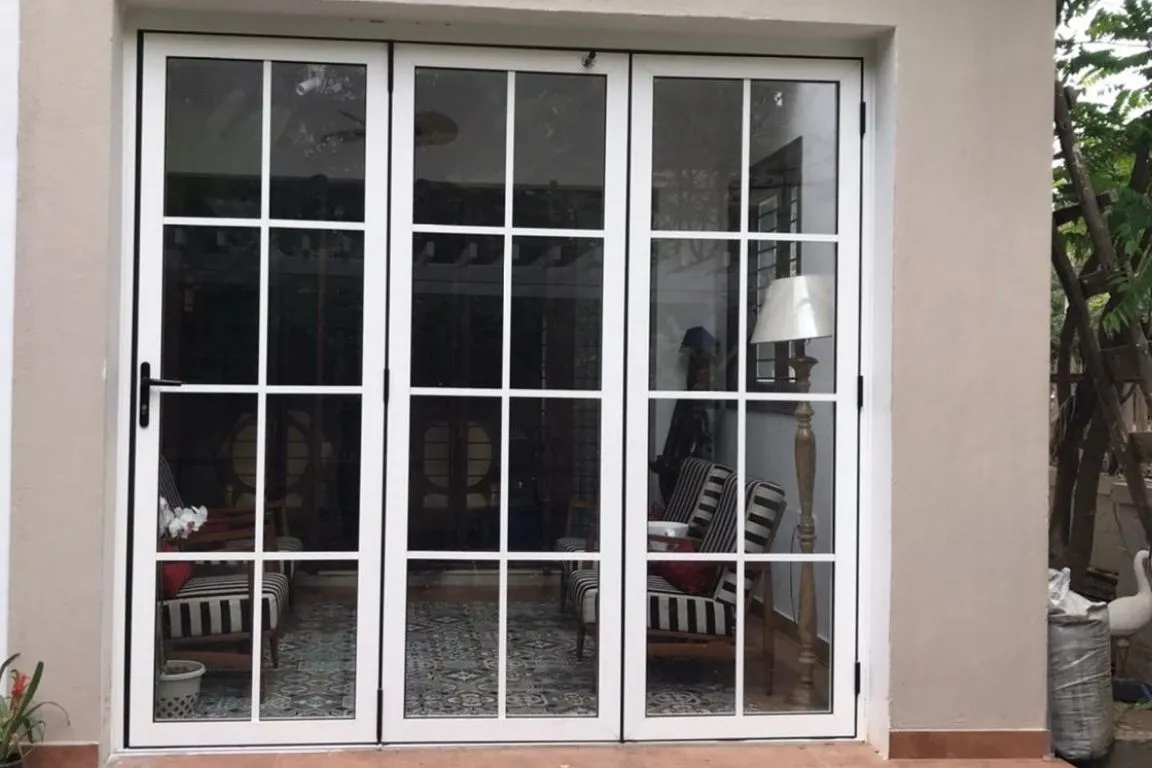
Elegant und voller Charme: Französische Türen verfügen über Glaspaneele, die natürliches Licht zwischen den Räumen hindurchlassen.
2. Scheunentore
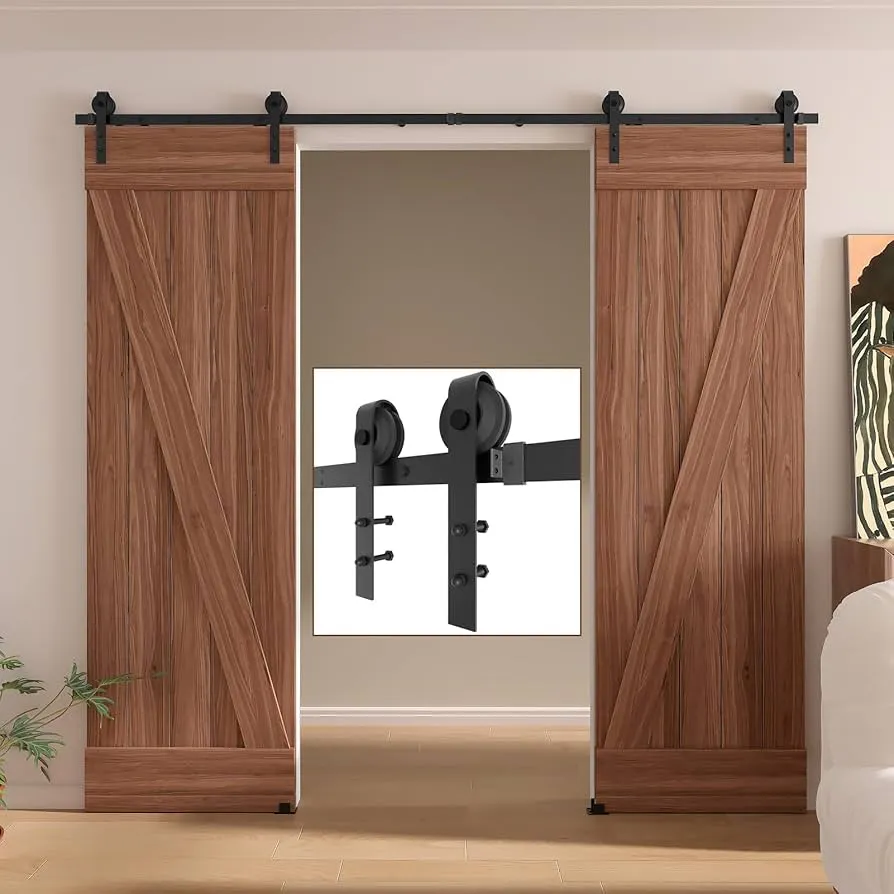
Scheunentore gleiten auf einer an der Wand befestigten Schiene und bieten eine rustikale, platzsparende Lösung, die sich ideal für moderne oder Landhaus-Interieurs eignet.
3. Schiebetüren
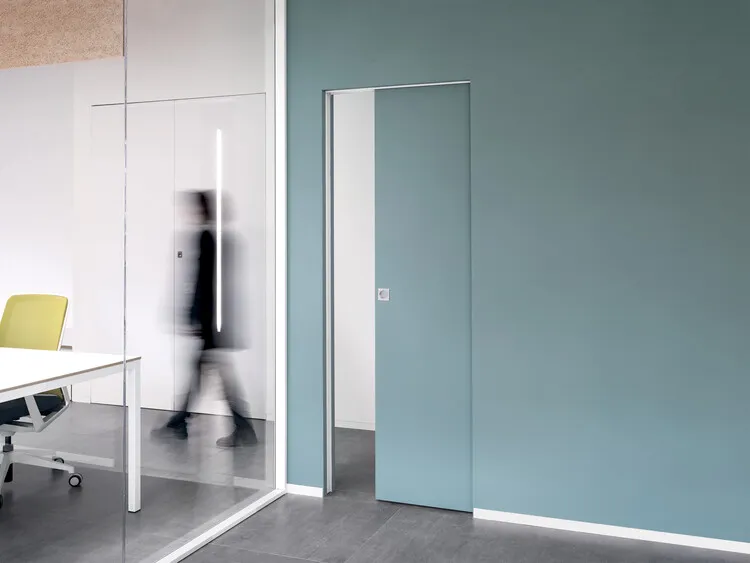
Schiebetüren verschwinden beim Öffnen in der Wand und sind daher eine clevere Wahl für beengte Räume oder minimalistische Raumkonzepte.
4. Holländische Türen
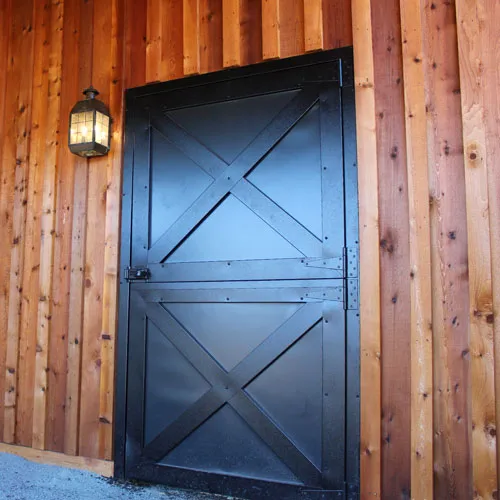
Die Flügeltüren lassen sich oben und unten unabhängig voneinander öffnen und verbinden so optischen Charme mit Luftstromregulierung – ideal für Küchen oder Haushalte mit Haustieren.
Gängige Materialien für Innentüren
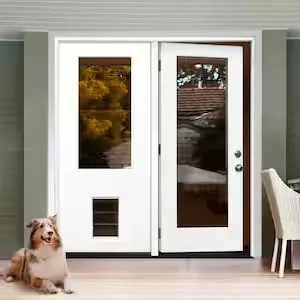
Das Material, das Sie für Ihre Innentür wählen, beeinflusst nicht nur das Aussehen, sondern auch die... Langlebigkeit, Schalldämmung, Und Budget. Hier sind die gängigsten Optionen:
Massivholz: Langlebig, elegant, hervorragende Schalldämmung
MDF (Mitteldichte Faserplatte): Glatt, preiswert, verzugsfrei
Hohlkern: Leicht und preisgünstig, aber weniger schalldicht
Massiver Kern: Schwerer und besser isolierend als Hohlkernmembranen.
Glas (klar oder mattiert): Verleiht Licht und Stil, bietet teilweise Privatsphäre
Metall oder Stahl: Robust, modern, ideal für Industrie-Interieurs
Häufig gestellte Fragen zu Innentürideen
1. Welche Türen eignen sich am besten für kleine Räume?
Schiebetüren, Scheunentore, Und Falttüren sind hervorragende platzsparende Optionen, ideal für enge Räume wie Abstellkammern oder Badezimmer.
2. Kann ich in einem Haus verschiedene Innentürstile kombinieren?
Ja! Solange die Materialien, Oberflächen oder Farben sind aufeinander abgestimmt, Die Kombination verschiedener Stile kann dem Ganzen Charakter verleihen, ohne den Fluss zu stören.
3. Eignen sich Milchglastüren für Innenräume?
Absolut. Milchglastüren Sie lassen Licht herein und wahren gleichzeitig die Privatsphäre, wodurch sie sich hervorragend für Büros oder Badezimmer eignen.
Abschluss

Neue Innentüren sind eine einfache, aber wirkungsvolle Möglichkeit, Stil und Funktionalität Ihres Zuhauses zu verbessern. Ob Sie klassischen Charme oder modernes Flair bevorzugen – die richtige Tür optimiert den Raumfluss, verleiht Ihrem Zuhause Persönlichkeit und verbindet Ihre Räume harmonisch miteinander.
Bereit für eine Umgestaltung Ihrer Innenräume? Entdecken Sie verschiedene Stile, Materialien und Oberflächen, um Türen zu finden, die Ihren Vorstellungen entsprechen – und Zögern Sie nicht, einen Profi zu konsultieren. Wenn Sie Hilfe bei der Umsetzung Ihres Designs benötigen.

